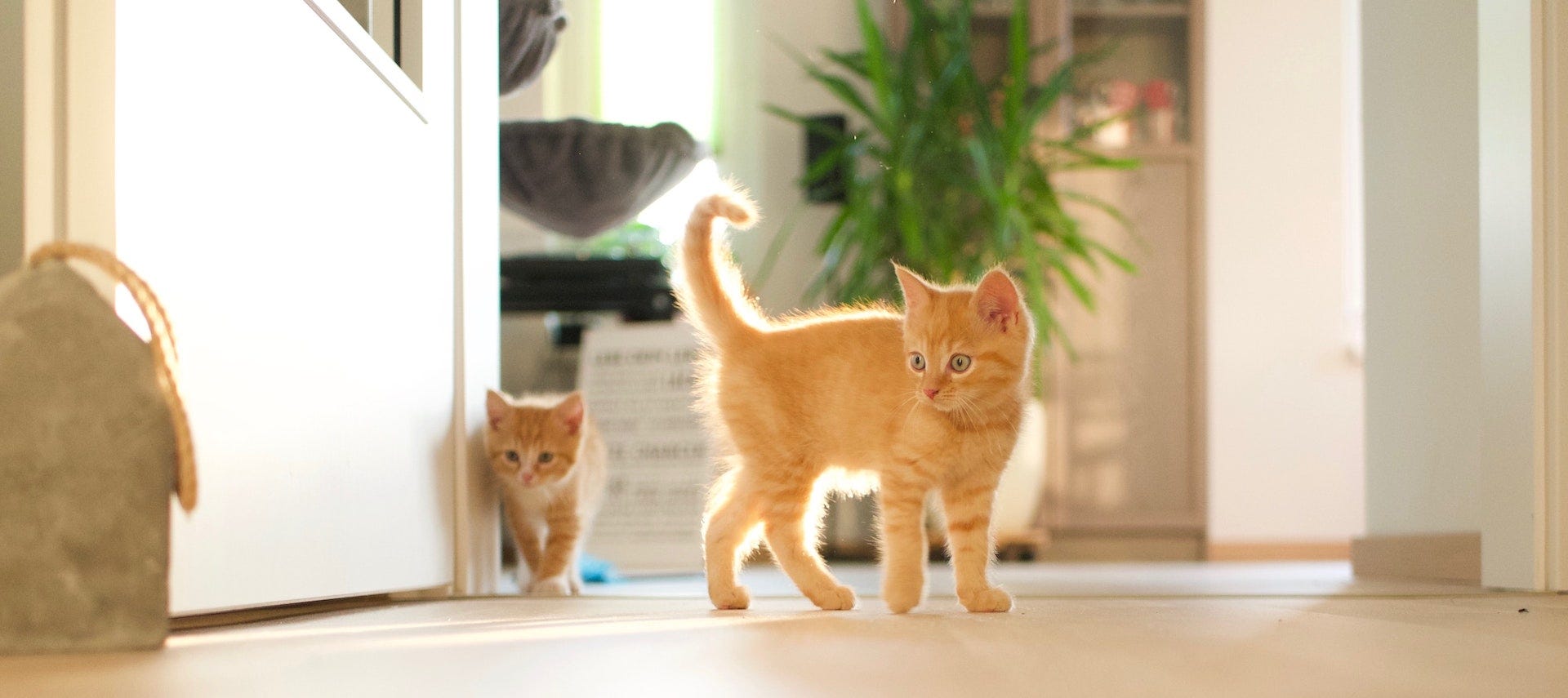If you’re a pet parent, you’ve probably questioned whether you can train your pet (and what kind of tricks you can train them to do!). We know that most dogs can learn commands—but can you train a cat? Yes, it’s possible to train some kitties. Follow the simple tips listed below to make training your cat easier!
How smart are cats?
Cats often act aloof, silly, or very stubborn. However, research shows that cats are quite intelligent.
Cat brains are very similar to human brains: they both contain cerebral cortices with similar lobes. And although cats only have around 250 million neurons as compared to humans’ 16 billion (and dogs’ 530 million), cats can still be trained!

Cats can be trained to do tricks
Similar to the way dogs need practice and love rewards, cats also need a lot of practice and rewards to keep them engaged in learning the trick. So, what can you train a cat to do?
Teaching cats tricks does not mean the trick has to be fancy or extra special. Cats have been taught how to sit, high-five, come when called, and walk on a leash. You might even say litter box training is a trick—but most cats instinctively know how to use a litter box.
7 ways to train your cat to do tricks
Let’s review some helpful tips for training your cat to do tricks.
Offer praise, not scolding
Can you train a cat by using praise? Absolutely. Like humans, most animals respond well to praise when they are learning something new. Scolding can have the opposite effect when attempting to train your cat. If your cat does not respond to the trick you are teaching, do not scold them, as this can lead to long-term behavioral problems. Offering praise and remaining patient with your cat will make the experience better for you both.
Be patient
It’s important to remember that learning anything new can take time. Patience with your cat will lead to better success when teaching cats tricks. It can be helpful to offer breaks between training sessions and allow your cat to burn off some extra energy. For example, installing some modern cat shelves can give your cat extra space for playing and relaxing after a strenuous training session.
Don’t force your cat to do anything
If you start to train your cat and they do not seem interested, don’t push it. Forcing animals to do things against their will can lead to resentment and even aggression. If your cat doesn’t seem interested, take a break and revisit the training at a different time.
Practice makes perfect
Remember, your cat is a pet—not an Olympic athlete capable of training for hours on end! Try keeping the training to a minimum. If you’re training your cat to sit, aim for roughly 50 practice sits per day. Keep in mind that the more you practice, the better your cat will be at the trick; however, keeping them excited and engaged is just as important.
Teach tricks one at a time
Think about a time you were trying to learn something new. You remained focused on learning the new task without adding any additional tasks to your plate. Cats are the same, and you should focus on one trick at a time. Once your cat has mastered a trick, then you can move on to another one. It’s important not to overwhelm them.
Rewards
Can you train a cat without rewards? It will be helpful to have some new treats or special foods handy when beginning your training. You don’t want to use their regular cat food, as that is something they are used to having and will not keep them interested.
However, if you offer a new treat or special food such as boiled chicken or some tuna, your cat will be more likely to attempt the trick to get the reward. If for some reason your cat is not interested in training, remove the treat so they begin to understand the connection.
Begin with the end in mind
When thinking of how to teach your cat tricks, remember to keep the end goal in mind. The main idea of training your cat should be to have fun and connect with your cat. Sure, it can be nice to teach them a valuable trick. However, keeping the training fun and engaging will help you achieve your end goal. If your cat has refused to learn the new trick, you can always take a break and let them burn off some steam with a rechargeable laser pointer.

Benefits of training your cat to do tricks
Some benefits of training your cat to do tricks include:
- Mental stimulation: Training your cat to do tricks keeps them mentally engaged and stimulated, an important part of life that is often lacking for indoor cats.
- Physical stimulation: Keeping your cat physically active is a great health benefit. Training and tricks help burn excess energy.
- Behavioral impacts: Training your cat can help reduce stress and boredom. This can be especially helpful in fearful or shy cats.
So, can you train a cat?
It is absolutely possible to train your cat to do tricks. However, it’s important to stay calm and patient with your cat when training them. Staying positive will lead to a better experience for both you and your cat. You can teach your cat how to sit, high-five, or even walk on a leash! Start your cat training journey with a self-cleaning litter box and pet feeder, such as the Litter-Robot 3 Connect and the Feeder Robot, to automate an important part of your life—and keep your feline happy!
It is typically easy to litter box train your cat, as the instinct to cover their waste comes naturally to cats.
Yes, it’s possible for cats to learn certain commands with proper training. Cats have been taught to sit, high-five, come when called, and walk on a leash.
Training your cat doesn’t have to be any more difficult or complicated than training a dog. Remember to be calm and patient. Training your cat can be a great bonding experience.
Cover photo by Alvan Nee on Unsplash




